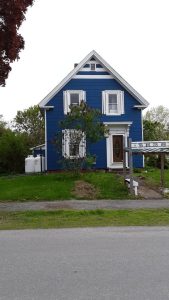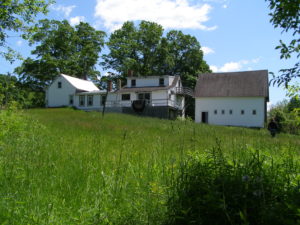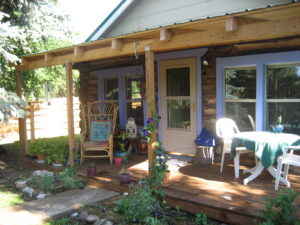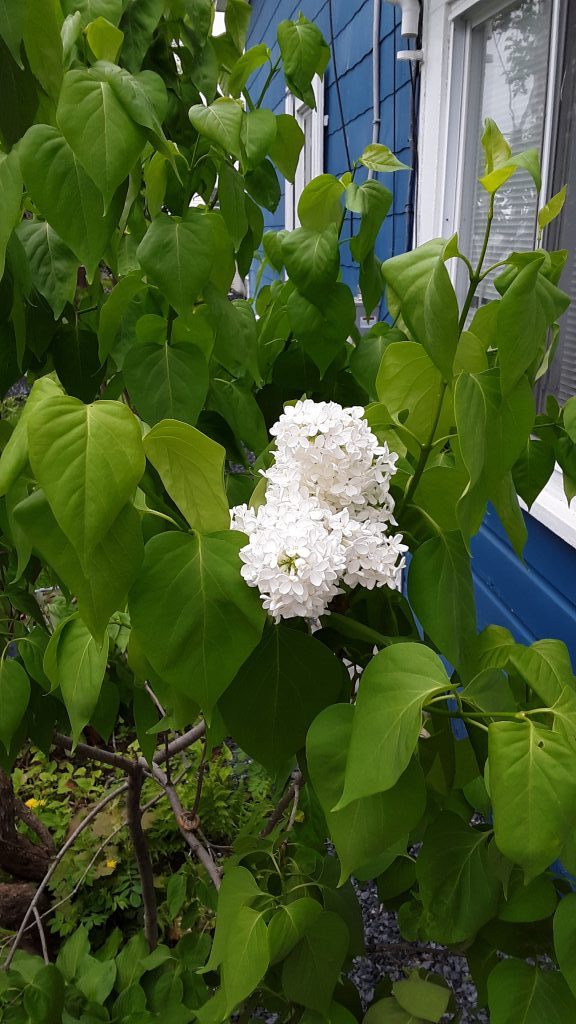As I unpack and gradually shape new routines after moving earlier in the month, I keep having a strange thought about this old colonial house we’ve bought.
This house is a grownup.
What does that mean? I ask myself.
Traditionally, colonials were built with high ceilings, wood floors, tall windows, a single staircase to the second floor just inside the front door, and a simple layout with pleasingly proportioned rooms. Colonial style includes iron, pewter, brass and copper; handmade textured fabrics; the rich, muted colors of milk paints; and dark accents and trim. Brick and exposed wood beams were common. We have a tin ceiling in the living room and kitchen.
When I sit in the living room, as I am now on a cloudy morning, I’m struck by the clean, classic lines, the elegant but unfussy trim, the cool morning light coming in the windows. The house, in spite of its condition, has dignity. It’s stately. It knows what it is. It’s not fresh and perfect and new, but it endures. The bones are clear and strong beneath some unfortunate modern décor and updates, but the house has not allowed the surface disturbances to change its essential character.
As I’ve played with this perception that the house is a grownup, I’ve thought about other places I’ve lived in the last 15 years.
The old farmhouse we just moved out of had dementia. Aged, deteriorating, badly planned in terms of layout, inconvenient, disorganized, and unkempt, it rambled and wandered, sagged and groaned, leaked and creaked. It was unfocused. It didn’t make sense. There were bats in the belfry and screws loose all over the place. That house needs experienced 24/7 caregivers, which is what it has now in its new owners.
The log cabin I lived in before I came to Maine was an immature house, a teenaged house. It wasn’t nearly as old as this colonial, which is 100 years younger than the farmhouse, but it wasn’t new, either. It was the first home I ever made for just myself, though I was well into my 40s when I bought it and remodeled it. The woman I was then was still, in many ways, immature, and the choices I made in using the space reflected my immaturity.
It’s popularly said we become who we hang out with. Are we also influenced by the spaces we spend our time in? Do our spaces reflect us, or do we reflect our spaces, or both, a kind of reciprocal reflection? We’ve just barely moved into this house, but from the first night I was here I was aware of the dignity of the place, and the contrast to the feel of my cabin in Colorado and the farmhouse.
Some people go through life like a piece of heavy equipment, immediately imposing themselves on their environment without ever noticing the feel and character of the place first. But history matters to me. I like to get to know places and spaces without imposing myself on them immediately. These old houses have sheltered many lives over decades, and have seen lots of changes.
Possessions and habits I used and loved in both my Colorado cabin and the farmhouse are simply not at home here. I don’t need them. I don’t even want them. Somewhere in the 15 miles between the farmhouse and this new address, I outgrew them. Strange. In those empty spaces, the new house suggests different habits and fewer possessions. I thought I would gradually rebuild my old routines, but in fact I’m shaping new ones, and the house itself influences the shaping in many ways. It suggests ways to live within its walls that align with its inherent simplicity, grace and dignity.
Our relationships to our places are complicated. Some people never leave their home place. Others of us transplant into entirely new soil under new skies. The adjustment is uncomfortable, but we discover things about ourselves and our possessions. Packing every single item we own, physically moving it, and unpacking and finding a new place for it is an opportunity to reevaluate and update our priorities and values.
I’ve always been a late bloomer. I finally seem to have grown up, and as this house and I get to know one another we’re scraping old layers of debris, trash, beliefs and habits off one another and helping each other stand tall and proud and peaceful, experienced and wise adults in an uncertain world.
And an old white lilac is blooming by the porch door.
© 2022 – 2024, Jenny Rose. All rights reserved.




Beautiful Jenny. This really resonates. Thank you. ❤️
Thank you, Annette!